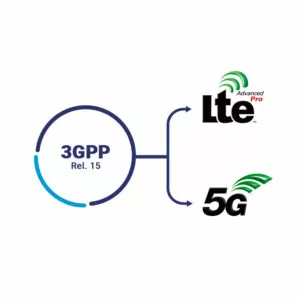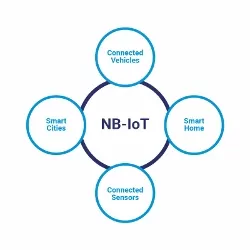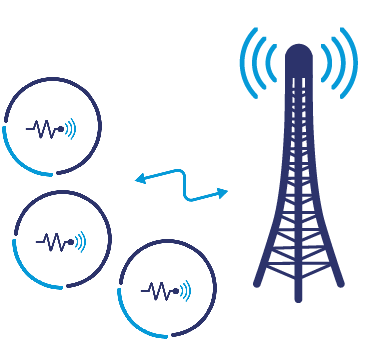
With this blogpost, we continue our discussion on the latest Study Items (SI) which are being worked on in 3GPP Rel-15[1,2]. We posted a similar article in April 2017 on our blog 3GPP Release-15: Further LTE Enhancements and 5G Normative Work Kick-off (do check it out if you haven’t already), and this post will add to the Work Items already discussed in the previous one and will present the latest studies on the LTE enhancements and 5G.
In this post, we will be primarily focusing on the below study items:
Enhancements for LTE
The study items further enhancing the LTE-Advanced Pro include the following:
Study on Uplink Data Compression (UDC): With more and more users creating content on their mobile phones and sharing it with the world by uploading/streaming, the UL traffic growth has been substantial and so far, the mobile networks have been focused mostly on increasing the downlink throughput and bandwidth leaving uplink to become a bottleneck for majority of the users. Hence, a mechanism to improve the uplink capacity needs to be considered at RAN level which helps in improving the uplink experience without the side effect of higher interference and power consumption increase at the UE side. Uplink data compression is a feature that can be implemented between the UE and eNodeB, and previous studies have shown UDC can help to achieve over 50% compression gain for web surfing, text uploading, online video and text over instant message [3] leading to increase in uplink capacity in practical network deployments. UDC can also help in improving the latency for uplink data especially in poor radio conditions or in resource limited environment.
Study on LTE bandwidth flexibility enhancements: Due to the spectrum allocation in various countries being driven by their channelization plan which does not strictly adhere to the spec defined nominal LTE bandwidths of 1.4/3/5/10/15/20 MHz, there has been under-utilization of certain portions of the spectrum defined for IMT-Advanced. Fixing this issue will help in utilizing the operator’s spectrum assets as efficiently as possible, but the solution should be such that it has minimal impact on the UE RF frontend while the base stations should be able to cater to the non-standardised bandwidths. To alleviate this issue, this study plan focuses on a developing a generic radio framework that maximizes the spectrum utilization for spectrum blocks which fall in the range of 1.4 MHz and 20 MHz having a known arbitrary bandwidth.
Study for enhanced VoLTE performance: The LTE networks are usually designed keeping data services in mind which are able to survive at lower RSRP levels than that required to sustain a VoLTE call with QCI 1, this usually leads to SRVCC handovers for users that are on cell edge. The focus of this study item is to find possible solutions to maintain voice quality on LTE as high as possible for users with marginal coverage by avoiding or at least delaying SRVCC as much as possible.
Study Item on ‘Virtual Reality’: Recently we have seen a surge in all-things related to virtual reality and this has been possible due to factors like, better equipment availability such as Head Mounted Displays (HMD), better content availability, better connectivity etc. This study item focuses on evaluating Virtual Reality as a media service for standardization by the 3GPP, similar to other services like VoLTE, Video over LTE etc., which have been standardized by the 3GPP. Different aspects such as: potential use cases, mapping of virtual reality in context of available services, technical requirements, experience evaluation etc., will be studied.
5G Related Study Items
As Rel-15 covers 5G Phase-I in terms of normative specification, the following items are considered for the 5G Phase-II, while Rel-15 evaluates their feasibility within SIs.
Study on NR-based Access to Unlicensed Spectrum: We have seen LAA come along quite a journey in the past few releases of the 3GPP (read more@ LTE-Advanced Pro and Unlicensed Spectrum). Now with 5G NR coming closer to reality it is essential that 5G NR can take full advantage of the developments made on access to unlicensed spectrum by LTE using LAA by ensuring fair coexistence. Within this study many important aspects such as solutions applicable to sub6 and above6 unlicensed bands (e.g., 5GHz, 37GHz, 60GHz) are being discussed along with the physical channels which are in accordance with the design of the 5G NR. Also being discussed are the different architectural scenarios for NR in unlicensed spectrum such as, NR as anchor cell (PCell on licensed spectrum) and NR unlicensed CCs as SCells, NR based cell in standalone deployment mode with 5G-CN in unlicensed spectrum (for private networks) etc.
Study on NR to support Non-Terrestrial Networks: From day 1, one of the possible deployment scenarios for 5G has been via non-terrestrial networks using satellites or other aerial vehicles in order to provide coverage to a very remote areas. This study item will discuss the channel models (propagation conditions, mobility) that will need to be used to achieve this and define the deployment scenarios along with the related system parameters. For more details read: How do satellite systems fit into 5G?
Study of enablers for Network Automation for 5G: The need to automate various functions of the networks has been one of the important requirements for mobile network operators in order to reduce the operational expenses. The MNOs usually rely on various KPIs collected at different points in the network to take decisions using various data analysis tools. Now within 5G Phase-I, Network Data Analytics (NWDA) has been introduced to provide slice (read more: What is slicing?) specific network data analytics automatically. This SI is dedicated to study the various automation method that can be carried out in the network using the data obtained from NWDA.
Study on system and functional aspects of Energy Efficiency in 5G networks: This SI is continuation of previous studies done by 3GPP on Energy Efficiency (EE) and is focused on 5G networks. The main aspects that will be covered during this SI are listed below:
- Identify the EE KPIs that are relevant to the 5G networks among those defined by different bodies such as: ETSI TC EE, ITU-T SG5, ETSI NFV ISG, etc.
- Check if existing OA&M mechanisms are relevant for the 5G networks and if not come up with new mechanisms to address this
- Find potential enhancements that could lead to better coordinated Energy Saving in 5G networks along with other 3GPP Systems
- Power Consumption Reduction at the Site Level
- Find any potential gaps and improve the Energy Efficiency control framework with respect to features like NFV and Self-Organizing Networks (SON)
If you are interested to read more about how energy efficiency can be achieved in 5G networks, read more: How to make 5G an energy efficient system?
Summary
As the target for completion of Rel-15 is September 2018, the work on most of the study items has still not been completed and there are some items on which work has not even begun yet. In this case we will be monitoring the developments happening within the study groups and update the latest status via our blog, so Stay Connected! If you have any queries or would like to know more about a particular enhancement, please do leave us a comment below and we would be happy to respond.
References
[1] http://www.3gpp.org/DynaReport/FeatureListFrameSet.htm
[2] http://www.3gpp.org/release-15
[3] http://portal.3gpp.org/ngppapp/CreateTdoc.aspx?mode=view&contributionId=687049
Note: ETSI is the copyright holder of LTE, LTE-Advanced and LTE Advanced Pro and 5G Logos. LTE is a trade mark of ETSI. Grandmetric is authorized to use the LTE, LTE-Advanced, LTE-Advanced Pro and 5G logos and the acronym LTE.







Tanks for your contribution